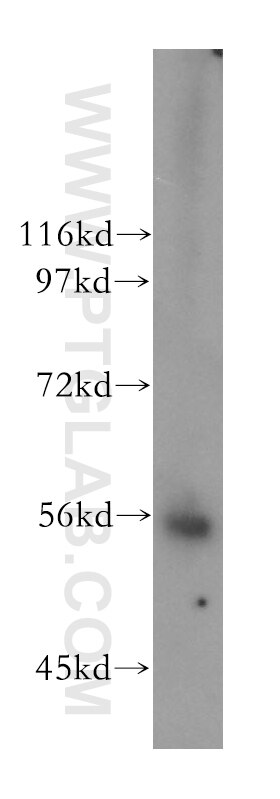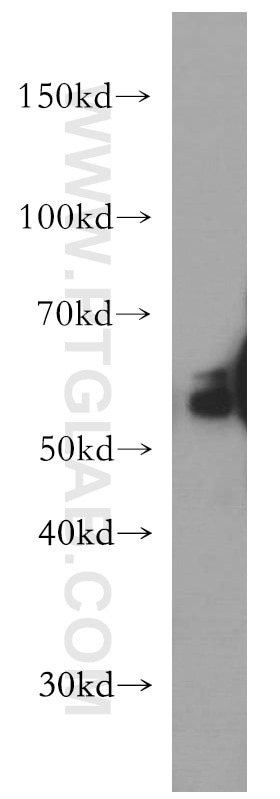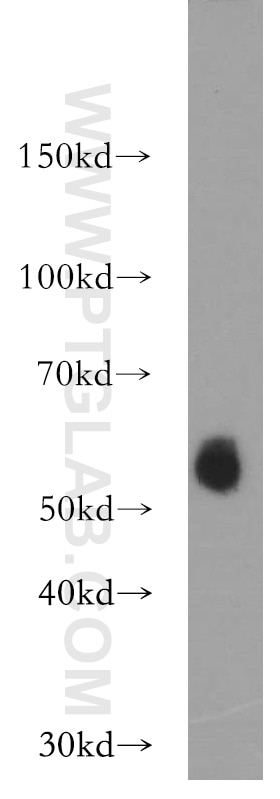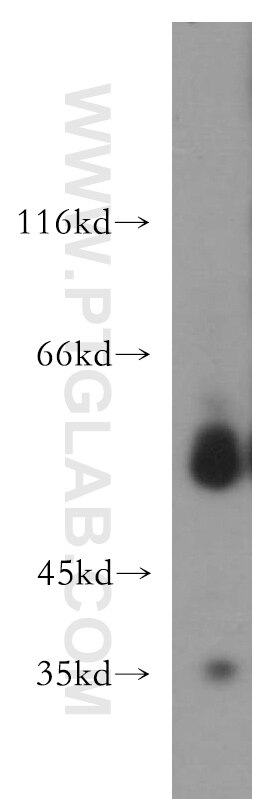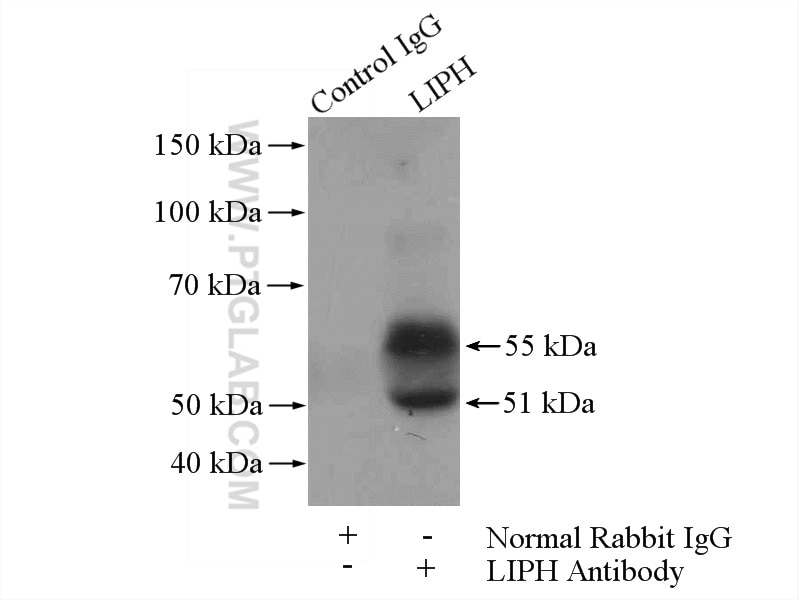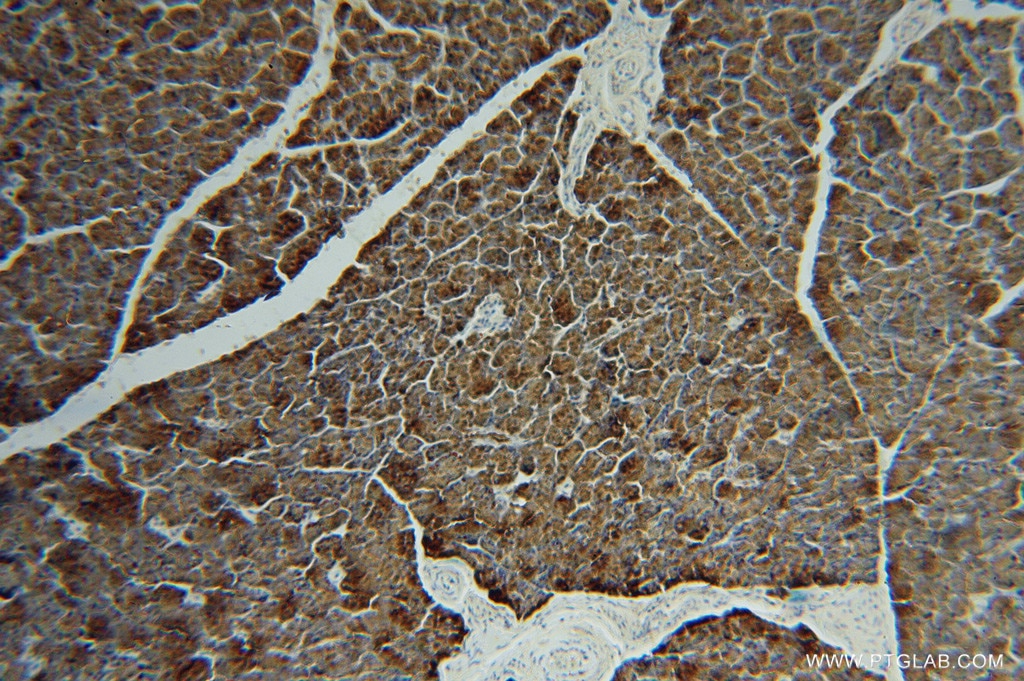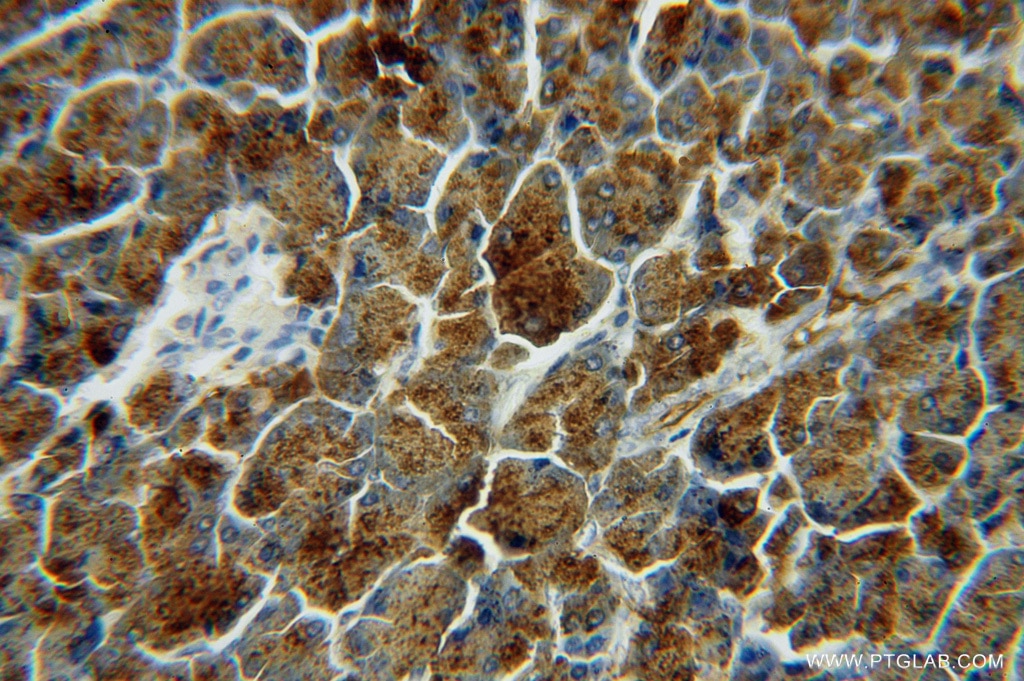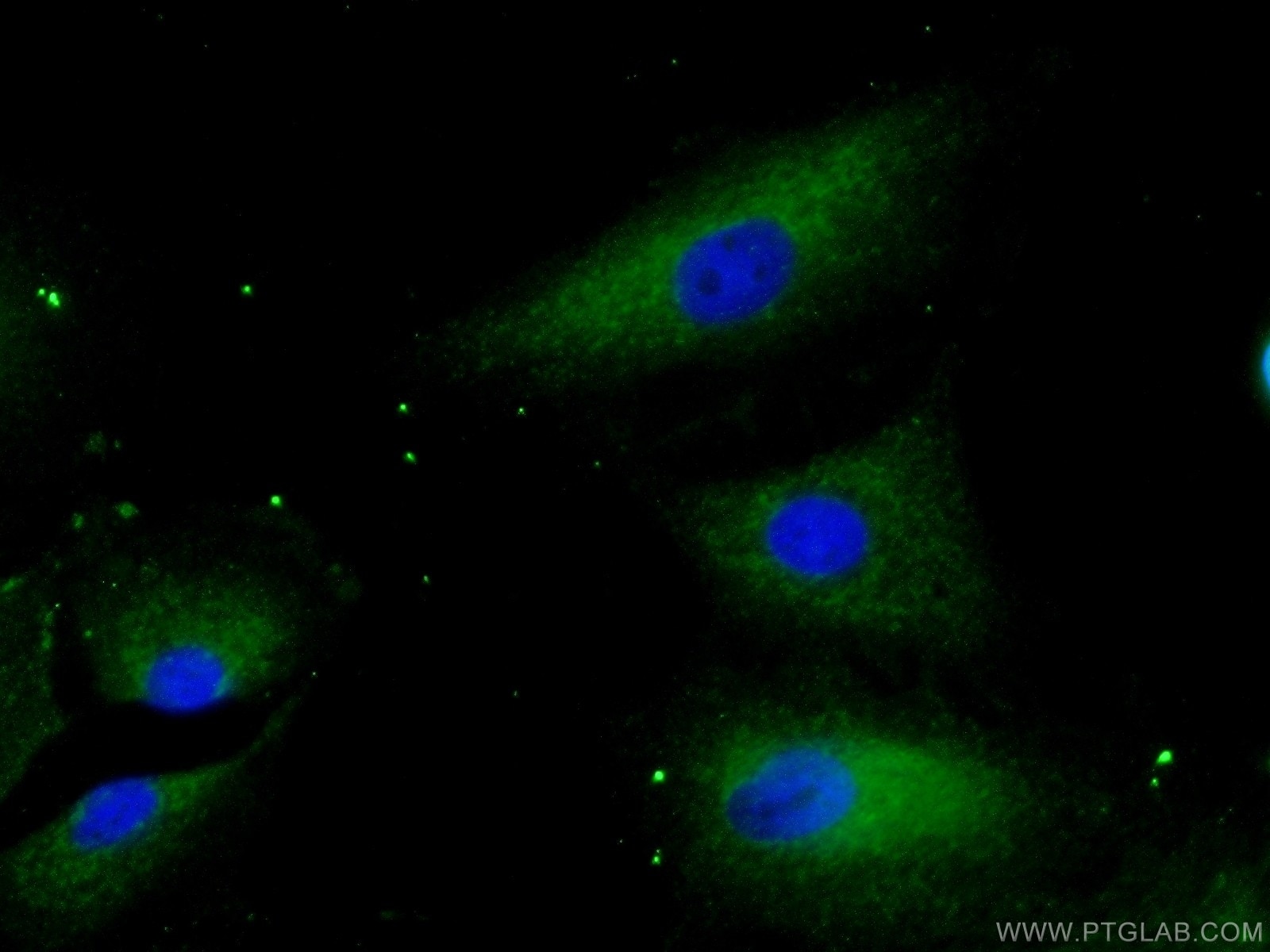- Phare
- Validé par KD/KO
Anticorps Polyclonal de lapin anti-LIPH
LIPH Polyclonal Antibody for WB, IP, IF, IHC, ELISA
Hôte / Isotype
Lapin / IgG
Réactivité testée
Humain, rat, souris
Applications
WB, IHC, IF/ICC, IP, ELISA
Conjugaison
Non conjugué
N° de cat : 16602-1-AP
Synonymes
Galerie de données de validation
Applications testées
| Résultats positifs en WB | cellules A549, cellules COLO 320, tissu pulmonaire de souris |
| Résultats positifs en IP | tissu pulmonaire de souris |
| Résultats positifs en IHC | tissu pancréatique humain il est suggéré de démasquer l'antigène avec un tampon de TE buffer pH 9.0; (*) À défaut, 'le démasquage de l'antigène peut être 'effectué avec un tampon citrate pH 6,0. |
| Résultats positifs en IF/ICC | cellules A549 |
Dilution recommandée
| Application | Dilution |
|---|---|
| Western Blot (WB) | WB : 1:500-1:1000 |
| Immunoprécipitation (IP) | IP : 0.5-4.0 ug for 1.0-3.0 mg of total protein lysate |
| Immunohistochimie (IHC) | IHC : 1:20-1:200 |
| Immunofluorescence (IF)/ICC | IF/ICC : 1:10-1:100 |
| It is recommended that this reagent should be titrated in each testing system to obtain optimal results. | |
| Sample-dependent, check data in validation data gallery | |
Applications publiées
| KD/KO | See 1 publications below |
| WB | See 3 publications below |
| IHC | See 5 publications below |
| ELISA | See 1 publications below |
Informations sur le produit
16602-1-AP cible LIPH dans les applications de WB, IHC, IF/ICC, IP, ELISA et montre une réactivité avec des échantillons Humain, rat, souris
| Réactivité | Humain, rat, souris |
| Réactivité citée | Humain |
| Hôte / Isotype | Lapin / IgG |
| Clonalité | Polyclonal |
| Type | Anticorps |
| Immunogène | LIPH Protéine recombinante Ag9775 |
| Nom complet | lipase, member H |
| Masse moléculaire calculée | 51 kDa |
| Poids moléculaire observé | 50-55 kDa |
| Numéro d’acquisition GenBank | BC064941 |
| Symbole du gène | LIPH |
| Identification du gène (NCBI) | 200879 |
| Conjugaison | Non conjugué |
| Forme | Liquide |
| Méthode de purification | Purification par affinité contre l'antigène |
| Tampon de stockage | PBS avec azoture de sodium à 0,02 % et glycérol à 50 % pH 7,3 |
| Conditions de stockage | Stocker à -20°C. Stable pendant un an après l'expédition. L'aliquotage n'est pas nécessaire pour le stockage à -20oC Les 20ul contiennent 0,1% de BSA. |
Informations générales
LIPH(Lipase member H) is also named as LPDLR, MPAPLA1, PLA1B. It is a phosphatidic acid-selective phospholipase A1 (PLA1) that produces 2-acyl lysophosphatidic acid (LPA) and belongs to the AB hydrolase superfamily and Lipase family.LIPH has a 12-residue lid region, which likely covers a catalytic pocket, and 4 potential N-linked glycosylation sites. Defects in LIPH are the cause of hypotrichosis type 7 (HYPT7).
Protocole
| Product Specific Protocols | |
|---|---|
| WB protocol for LIPH antibody 16602-1-AP | Download protocol |
| IHC protocol for LIPH antibody 16602-1-AP | Download protocol |
| IF protocol for LIPH antibody 16602-1-AP | Download protocol |
| IP protocol for LIPH antibody 16602-1-AP | Download protocol |
| Standard Protocols | |
|---|---|
| Click here to view our Standard Protocols |
Publications
| Species | Application | Title |
|---|---|---|
Genet Med Loss-of-function variants in C3ORF52 result in localized autosomal recessive hypotrichosis. | ||
Cell Oncol (Dordr) Genomic analysis and filtration of novel prognostic biomarkers based on metabolic and immune subtypes in pancreatic cancer | ||
J Cell Mol Med LIPH promotes metastasis by enriching stem-like cells in triple-negative breast cancer.
| ||
Tumour Biol Lipase member H is a novel secreted protein associated with a poor prognosis for breast cancer patients. | ||
Biochem Biophys Res Commun Lipase member H is a novel secreted protein selectively upregulated in human lung adenocarcinomas and bronchioloalveolar carcinomas. | ||
Tumour Biol Lipase member H frequently overexpressed in human esophageal adenocarcinomas. |
